Small Group Experiential Travel
Tour Code
XPR
Start
Bilbao
End
Santiago de Compostela
Tour type
Active
Max Group Size
16
When To Go
Jun, Sep
Activity Level
3 - Active
Overnight in
Bilbao, Pamplona, Burgos, Leon, Santiago de Compostela, Lugo, Punte La Reina, Laguardia, Carrion De Los Condes, Villafranca Del Bierzo, Palas De Rei, Lavacolla
- Overview
- Info & Inclusions
- Itinerary
- Map & Hotels
- Photos
- Dates & Prices
Highlights
- Magnificent Guggenheim Museum
- Hemmingway's Pamplona
- Spectacular walks on Way of St James
- Tiny hamlets, mountain scenery
- Strolling on Santiago's cobblestone streets
Description
Embark on a transformative journey along the historic Camino de Santiago.
This cultural and historical hiking tour invites you to explore the ancient pilgrimage route that has captivated travelers for centuries. Each day, you'll traverse picturesque landscapes, from rolling hills to quaint villages, while immersing yourself in the rich tapestry of Spanish history and tradition. Our expert guides will illuminate the significance of this iconic path, sharing stories of pilgrims, knights, and saints who have walked these same trails. As you journey towards the magnificent Cathedral of Santiago de Compostela, you'll encounter awe-inspiring Romanesque architecture, sample delectable local cuisine, and connect with fellow travelers from around the world.
This cultural and historical hiking tour invites you to explore the ancient pilgrimage route that has captivated travelers for centuries. Each day, you'll traverse picturesque landscapes, from rolling hills to quaint villages, while immersing yourself in the rich tapestry of Spanish history and tradition. Our expert guides will illuminate the significance of this iconic path, sharing stories of pilgrims, knights, and saints who have walked these same trails. As you journey towards the magnificent Cathedral of Santiago de Compostela, you'll encounter awe-inspiring Romanesque architecture, sample delectable local cuisine, and connect with fellow travelers from around the world.
Price Includes
- Full-time Tour Leader service plus local guide support at several locations.
- Breakfast and dinner (hotels & local restaurants) daily.
- All accommodation, transport, sightseeing and entrance fees for sites noted as 'visited' in the detailed itinerary.
- Gratuities for local guides, drivers, restaurant staff, porters.
- Airport transfers for land & air customers and for early arriving/late departing land & air customers who book their extra hotel nights through us.
Exclusions
- International airfare to/from the tour.
- Tour Leader gratuities, lunches, drinks, personal items (phone, laundry, etc), international air taxes (if applicable), excursions referenced as 'optional'.
- Airport transfers for Land Only customers.
- Optional trip cancellation insurance.
Trip Info
- Seasonality and Weather:
In this northerly part of Spain, one can experience cold and wet weather into the spring and even in late summer/early fall. As such, we plan this trip for the late spring/early summer months when we can expect warm fine days and cool mornings/evenings. In this part of the country, showers can occur at any time but are least likely in summertime. This also means that the trail will be busy with other hikers; however, this is likely going to be the case on a pilgrimage route! Meeting other "pilgrims" along the way is actually a big part of the fun! - Transport and Travel Conditions:
Most transport is by private air-conditioned vehicle, +/- 24 seats depending on ultimate group size (see 'group size'). Due to the winding roads and lack of accessibility on narrow streets in small towns and villages, we will avoid the large motor-coaches more typical of large group touring. One of the delights of exploring this compact region is the lack of long road journeys, allowing us to maximize our time doing, seeing, smelling, tasting, experiencing, and soaking it all in.
While El Camino has, of course, for centuries been a sacred pilgrimage route, in the 21st Century the reasons why one might want to experience this fascinating part of Europe can vary greatly among visitors, and many of our past participants had interests that went well beyond matters spiritual -- history, art, politics, architecture, nature, gastronomy, and recreation. While the religious theme will permeate much of what we so and do, our intention is to deliver a broadly-based experience that will highlight all the many special attributes that makes this part of the world so inviting.
OUR WALKS
Our difficulty rating "Level 3" refers to our walks/hikes that go beyond town/city walking tours on pavement or cobblestones, to hiking on "natural" surfaces (ie gravel) and pathways that feature some elevation gain/loss as opposed to reasonably flat terrain. Such hikes are leisurely with plenty of stops along the way, but they can be of a greater duration than our walking tours that fall under category #3. This activity does not occur every day, but as per our tour itinerary, even when not on a "hike," we will be on foot quite a lot, with town walking tours, winery visits, with plenty of places with uneven surfaces and stairs.
Because some hikes can/may be adjusted at the discretion of your Tour Leader depending on things like weather and group interest, the final distances/durations of our hikes as indicated in our itinerary should be taken as guidance only. In the meantime, however, we can advise that, generally-speaking, our walks are leisurely on well-trodden pathways over undulating terrain (some walks are downhill), 2-5 hours in overall duration with plenty of breaks for refreshment, photos, and taking it all in. Please note that some surfaces feature loose material (ie stones, gravel, sand etc) which can be slippery. Good footwear/tread and walking poles will help to steady you and support your knees.
This is a hotel-based tour with no camping, and you are required to only carry what you need for the day. For daily summary of our hiking activities, please refer to the tour itinerary.
The "CREDENCIAL", or Pilgrims' Passport:
This is a pass book which grants entry into various sites along the way, and are generally available in hostels in larger towns along El Camino, including the Archbishop's Palace in Pamlona. Many attractions will stamp your credencial, which then becomes a wonderful souvenir of the trip. Technically the credencial is not meant to be granted to those doing El Camino with vehicle support, though you will not likely be asked for this information. If you would like more information about credencial, and El Camino in general, click on the Confraternity of St James website at www.csj.org.uk
Am I suitable for this tour? Please refer to our self-assessment form - Accommodation:
Well-located, air-conditioned, mid-range hotels and inns (3 star) throughout. All hotels have en suite bath, though some may have shower only. Porter service is sometimes available though you should be independent with your luggage. Single rooms are limited in number and likely smaller than twins.
PLEASE NOTE: Due to extremely limited accommodation along el Camino, our hotels may be located a few kilometers outside of the overnight points indicated on our itinerary (with the exception of major centres like Bilbao, Leon, and Santiago). - Activity Level: 3
These tours are considerably more strenuous than our Level 1 & 2 "cultural" tours and feature walks/hikes on undulating and uneven pathways for 3-7 hours at a leisurely pace. We don't hike every day, but participants should be fit and active and accustomed to trail walking, possibly in remote locations, and be prepared to engage in a conditioning regimen prior to the trip. Altitude may also be a factor on some tours, though none of our hiking tours currently occur above 3000m/10,000 ft. These are hotel-based tours with no camping, and you are required to only carry what you need for the day.
To learn more about the Activity levels, please visit our tour styles page. - Staff and Support:
Tour Leader throughout, driver, local guides. - Group Size:
Maximum 16 plus Tour Leader
Download Itinerary
- Day 1:Arrive in Bilbao, SpainWe arrive in Bilbao and transfer to our hotel.
PLEASE NOTE: Due to extremely limited accommodation along El Camino, our hotels may be located in the general vicinity of the overnight points indicated on our itinerary (with the exception of major centres like Bilbao, Leon, and Santiago).
Overnight Bilbao.
Included Meal(s): Dinner - Day 2:Bilbao & The GuggenheimToday we have a guided half-day "panoramic" tour of Bilbao, including the newest and biggest attraction in town, the Guggenheim Museum.
The 31329 sq m (349,000 sq foot) colossus is one of the focal points of a $1.5 billion redevelopment plan for the city. The Frank Gehry design features a 50 m- (165 foot-) high atrium -- more than one-and-a-half times the height of the rotunda of Frank Lloyd Wright's Guggenheim Museum in New York. Stretching under the bridge and incorporating it in its design, the museum reanimates the promenade with its towering roof, reminiscent of a blossoming "metallic flower." The museum is devoted to American and European art of the 20th century, featuring the works of such renowned artists as Kandinsky, Mondrian, Picasso, Ernst, Pollock, Lichtenstein, Oldenburg, Serra, and others.
We will likely finish at the museum so that those who want to linger after the formal guided portion of our visit may do so.
Overnight in Bilbao.
Included Meal(s): Breakfast and Dinner - Day 3:Bilbao - San Sebastian - PamplonaToday we travel to Pamplona, located within the region of Navarre. The city is best known for the tradition of the running of the bulls which occurs in July every year as made famous by Ernest Hemingway's "The Sun Also Rises."
En route we stop at San Sebastian, the undisputed queen of the Basque resorts. Set around the deep, still bay of La Concha and enclosed by rolling low hills, it's beautifully-situated; the old town sits on the eastern promontory, its back to the wooden slopes of Monte Urgull, while newer development has spread along the banks of the Urumea, around the edge of the bay to the foot of Monte Igueldo and on the hills overlooking the bay. We have a guided tour and time for lunch and some exploration before continuing to Pamplona.
We have a walking tour of the old fortress city of Pamplona (Iruna), said to have been founded by the Roman general, Pompey. In the ninth century it became the capital of Navarra. This otherwise quiet city explodes into life in July during the fiesta of Los Sanfermines, with its dare-devil bull running. From the old city walls (murallas) we can get a good overview of Pamplona. The nearby cathedral, which is built in ochre-coloured stone, looks down on a loop in the Rio Arga.
Overnight in Pamplona.
Included Meal(s): Breakfast and Dinner - Day 4:Pamplona - Eunate - Puente la ReinaThis morning we leave Pamplona and make a stop at the spectacular Lumbier Gorge. You will be struck by the power of the water and the erosion which, over millions of years, has managed to carve these ravines in the mountain. They are inaccessible spots with vertical walls, deep rivers, rocky places furrowed with cracks and caves, the refuge of many animals and birds. We'll walk along the rim for about 5km (flat surface).
We continue to Santa de Maria de Eunate, a striking octagonal Romanesque church built by the Knight Templars and rising romantically in the middle of the green fields. Today we begin our walk along El Camino from the church to the proud village of Obanos, where many houses still preserve the Coat of Arms (2 km, mostly flat). From Obanos, the trail brings us to Puente la Reina (3 km).
Puente la Reina, an evocative medieval town built for pilgrims at the meeting point of two Spanish pilgrim routes. The Camino Frances from Roncesvalles, France and the camino Aragones converge at Puente la Reina's 11th century bridge. The town retains its original vocation and the genuine atmosphere of a place of pilgrimage.
DAY SUMMARY: 11 km (7 mi) of easy walking.
Overnight in Puente la Reina.
Included Meal(s): Breakfast and Dinner - Day 5:Puente la Reina - Maneru - Lorca - Puente la ReinaWe stroll the timeless main street, cross the thousand-year-old bridge that spans the green Arga River, and hike El Camino along the Raga for a while (flat), and then uphill towards the village of Maneru (approx 90 min). After Maneru, the trail meanders through a lovely patchwork of vineyards and orchards up to the hilltop village of Cirauqui, with its remarkable collection of both civil and religious buildings. From Cirauqui, we follow an ancient paved road (downhill) lined with cypresses and we cross the Roman bridges still in use to reach the town of Lorca. We return to our hotel in Puente la Reina for the night.
DAY SUMMARY: About 15 km (9.5 mi), rolling terrain.
Overnight Puente la Reina.
Included Meal(s): Breakfast and Dinner - Day 6:Puente la Reina - Estella - LaguardiaThis morning we drive to the town of Estella for a one-hour walking tour around town. This town is also known as Estella la Bella for its beauty and was also a favourite pilgrim stopover. The creation of the town in 1090 is associated with a mysterious statue of the Virgin found in a cave nearby. The town is full of Romanesque religious buildings dating from the 12th and 13th centuries. We walk to the Monasterio de Irache a 10th century Benedictine monastery, for a look at its Fuente de Vino, a wine fountain built by the monks of Irache to refresh passing pilgrims.
We continue to Azqueta and end in Villamayor de Monjardin, where we will board the bus and drive to Torres del Rio to visit Iglesia Santo Sepulcro, a 12th-centrury gem of Romanesque architecture and a highlight of our day. We continue by bus to our hotel in Laguardia. This is a rather long stretch with lots of sun exposure, though it is almost completely flat.
DAY SUMMARY: 9 km (uphill walking, we will gain 300 m/984 ft of elevation over the course of the walk)
Overnight Laguardia.
Included Meal(s): Breakfast and Dinner - Day 7:Laguardia - BurgosToday we travel to Burgos, set along the Arlanzon River, for a well-deserved rest day. The promenade along the river is one of Spain's prettiest, and we have the afternoon to enjoy this setting and (possibly) visit Burgos's diaphanous Gothic cathedral and castle ruins above town.*
Burgos preserves one of the greatest collections of Gothic art and monuments in southern Europe, yet it has also had a long role as a military camp, from the days of El Cid in the 15th century to General Franco, who during Spain's Civil War made Burgos his capital. It was here that Franco held his infamous trials of 16 Basque separatists. The Kingdom of Castile was born in the town of Burgos, and its castle stands on what was the Moorish frontier in 884. Old Castile and Leon, which we visit in a few days, encompass two ancient kingdoms on Spain's Meseta, a semi-arid expanse of dun-coloured plains spotted with patches of mountains.
* NOTE: The castle maybe closed during our spring departures, in which case we will be able to admire from exterior only. Our summer and fall trips should be able to visit the interior.
NON-WALKING DAY.
Overnight Burgos.
Included Meal(s): Breakfast and Dinner - Day 8:Burgos - Carrion de Los CondesWe drive to the 14th century remains of the Monasterio de San Anton and then pick up El Camino and walk to the medieval castle and village of Castrojeriz (flat, 3 km). We enjoy the fine Gothic church called Santa Maria del Manzano, named after a local apple tree where a statue of the Virgin was found. Those who like can take an optional scramble up the castle (45 minutes, steep, but well worth it!).
Afterwards we drive to Boadilla del Camino, where we check out some interesting dovecotes, then continue our walk to the town of Fromista (flat, 6 km), a key stop since the days of the Codex Calixtinus. If open, we can visit its perfect Romanesque church, the golden St Martin. The barrel-vaulted interior is loaded with extraordinary sculptural detail full of occult and medieval symbols.
From Fromista, we drive to our hotel in the ancient town of Carrion de los Condes, with its two 12th century Romanesque churches. Our accommodation here is a beautiful monastery that has been converted into a hotel. In Spain, a number of historic buildings of notable architecture have been converted into fine hotels and are known as Paradores.
DAY SUMMARY: Total walking, 9 km (5.6 miles) and optional extra 3 km
Overnight Carrion de los Condes.
Included Meal(s): Breakfast and Dinner - Day 9:Carrion de Los Condes - LeonAfter a leisurely morning in Carrion de los Condes, we leave the mountains and drive across the treeless plains of Castile to visit the engaging city of Leon, for a non-trekking day. Within the two cities it encapsulates, ie the old medieval part and the modern one that stretches alongside the river, there is an extraordinary historical and artistic heritage. The Roman and medieval walls in between help to highlight the beautiful contrast between the old quarter and the squares, known as the Plaza Mayor and the Plaza del Mercado, and the avenues, modern buildings, parks and gardens that lie to the west. The three most characteristic monuments that stand out for their great artistic value in Leon are the Cathedral, the Collegiate Church of San Isidoro and the Convent of San Marcos.
NON-WALKING DAY.
Overnight in Leon.
Included Meal(s): Breakfast and Dinner - Day 10:Leon - Villafranca del BierzoWe drive to the village of Santa Catalina de Somoza to begin our walk to El Ganzo (5 km, slight incline), where on the main trail we can visit a craftsman who makes walking sticks from local beech trees. We begin our hike here climbing a path through the forest to emerge in a moor of heather and Scotch broom.
Our hike takes us up to the town of Rabanal del Camino (slight rise, 7 km), where the bus picks us up and drives us to the stunning Cruz del Ferro. We stop to enjoy views from the top of the Montes de Leon. From here we walk downhill to Manjarin (2km) where the bus will pick us up and drive us to Acebo for some free time for lunch and a stroll about town. We depart Acebo by bus and drive down a steep switchback road (5km) to Compludo where we can see a medieval-era forge still in use. Later, we drive to the charming town of Villafranca del Bierzo, capital of a former station on the pilgrim's road to Santiago. Villafranca del Bierzo was built in the 11th century at the confluence of two rivers and is surrounded by mountains. As its name suggests, it was founded by the French and in its heyday had six pilgrim hospices and eight monasteries.
DAY SUMMARY: Todays walk is about 16 km, not all on the Camino (2 km to the medieval-era forge and back dont count toward the Camino)
Overnight Villafranca del Bierzo.
Included Meal(s): Breakfast and Dinner - Day 11:Villafranca del Bierzo - Trabadelo - O Ceibreiro - LugoThe lush Cordillera Cantabria mountains are the last barrier before Santiago. Here in a very rural stretch of Galicia, we find Spain at its most Celtic. We hike today on a part of El Camino that rarely coincides with any roads and is especially pleasant. The first 3km (1.8 mi) are steep, then the route levels off to a gentle incline for about 6km (3.7 mi). The final 3km is a gentle descent to Trabadelo.
Our bus picks us up at this point and takes us to the mystical Celtic village of O'Ceibreiro, which once ranked with Roncesvalles as a resting place for pilgrims. A Benedictine monastery, Santa Maria del Ceibreiro, was built here in the 9th century over an ancient Celtic temple. O Ceibreiro and the mountains to the north form part of the Reserve Nacional de Os Ancares, partly a hunting reserve of roebuck and boar. We continue by road to Lugo, a town with largest intact Roman walls in Spain.
DAY SUMMARY: Todays hike is about 10 km of some incline and flat walking.
Overnight in Lugo.
Included Meal(s): Breakfast and Dinner - Day 12:Lugo: Portomarin - Palas de ReiWe drive to Peruscallo and pick up the Camino to Ferreiros, with its Romanesque churches and many rural villages, where we begin our relatively easy day's walk (mostly flat). This stage is one of the most beautiful because of its mountain scenery and countryside. We pass down through the Mino Valley we will arrive to Portomarin, passing through small hamlets along the way. We drive to our hotel near Palas de Rei, where you have the opportunity to soak in the hotels thermal pools (additional cost).
We finish our day's walk at nearby Palas de Rei, an important town in the Middle Ages located on El Camino. Due to a lack of suitable accommodation in Pala de Rei, we'll return to Lugo for dinner/overnight.
DAY SUMMARY: Our hike today is about 15 km.
Overnight in Lugo.
Included Meal(s): Breakfast and Dinner - Day 13:Lugo - Palas de Rei - LavacollaThis morning we return to Palas de Rei and pick up where we left off yesterday, an excellent starting point for today's on-foot exploration of more Galician countryside. We follow lovely backroads that pass through hamlets and farms flanked by grain silos in granite. We will see the first forest of eucalyptus, which heralds the proximity of the ocean. The churches here are small and very moving, and numerous religious crosses along the way testify that Christianity is deeply anchored in the land of Galicia.
We walk downhill to Leboreiro, a medieval village famous for a 14th Century miracle in which the Eucharist was transformed into actual flesh and blood. We continue on mostly flat ground to Melide from which we drive to Lavacolla. We have relatively easy walking today despite the length of 16km (10 miles).
DAY SUMMARY: 16 km (10 miles), well-trodden easy terrain.
Overnight in Lavacolla.
Included Meal(s): Breakfast and Dinner - Day 14:Lavacolla - Santiago de Compostela
- Santiago de CampostellaThis morning we see Santiago from the ancient pilgrim overlook above town, and then make our final hike, about 12km (7.5 miles), following El Camino into Santiago itself, where all roads lead to the vast central plaza and extraordinary cathedral containing the remains of St James.
Santiago is one of Spain's most beautiful cities, built of golden granite and declared a national monument in its entirety. It's a wonderful place to walk, with its arcades and flagstone streets, and we have the afternoon free to enjoy the town.
Overnight in Santiago.
Included Meal(s): Breakfast and Dinner - Day 15:Santiago de Compostela: City TourThis morning we have a walking city tour of Santiago, a UNESCO World Heritage city. Our tour begins at Obradoiro Square where some of its more prominent monuments can be seen: the Archbishop's residence which preserves some 12th century lounges; the Town Hall, former Raxoy Palace, with its classical facade; the San Jeronimo College, whose facade shows Roman influences.
We also include the city's famous cathedral, a truly grand building adorned with many statues of St James in his familiar pilgrim guise with staff, broad-brimmed hat, and scallop-shell badge.
We also visit the Cathedral Museum, the Cloister and finally, the Platerias Gate, the only Romanesque one that is still preserved; and we take a guided tour of the Cathedral roofs, which allows us to climb to the very top of the building and look out over the historic centre from the heights. To do so we make for the Gelmirez Palace, located to the side of the Cathedral in the Plaza del Obradoiro square. We pass through the interior of the Gelmirez Palace, past the Cathedral gallery (above the Gloria doorway) and up to the roof of the cathedral.
Overnight in Santiago de Compostela.
Included Meal(s): Breakfast and Dinner - Day 16:DepartureDeparture from Santiago.
BUEN VIAJE!
Included Meal(s): Breakfast
Regions Visited: Western Europe
Countries Visited: Spain
Countries Visited: Spain
*The red tour trail on the map does not represent the actual travel path.
The following is a list of sample hotels at some locations included on this tour. The hotels shown here are meant to provide a general sense of the standard of hotel we usually aim for; they are not necessarily confirmed for your chosen departure.
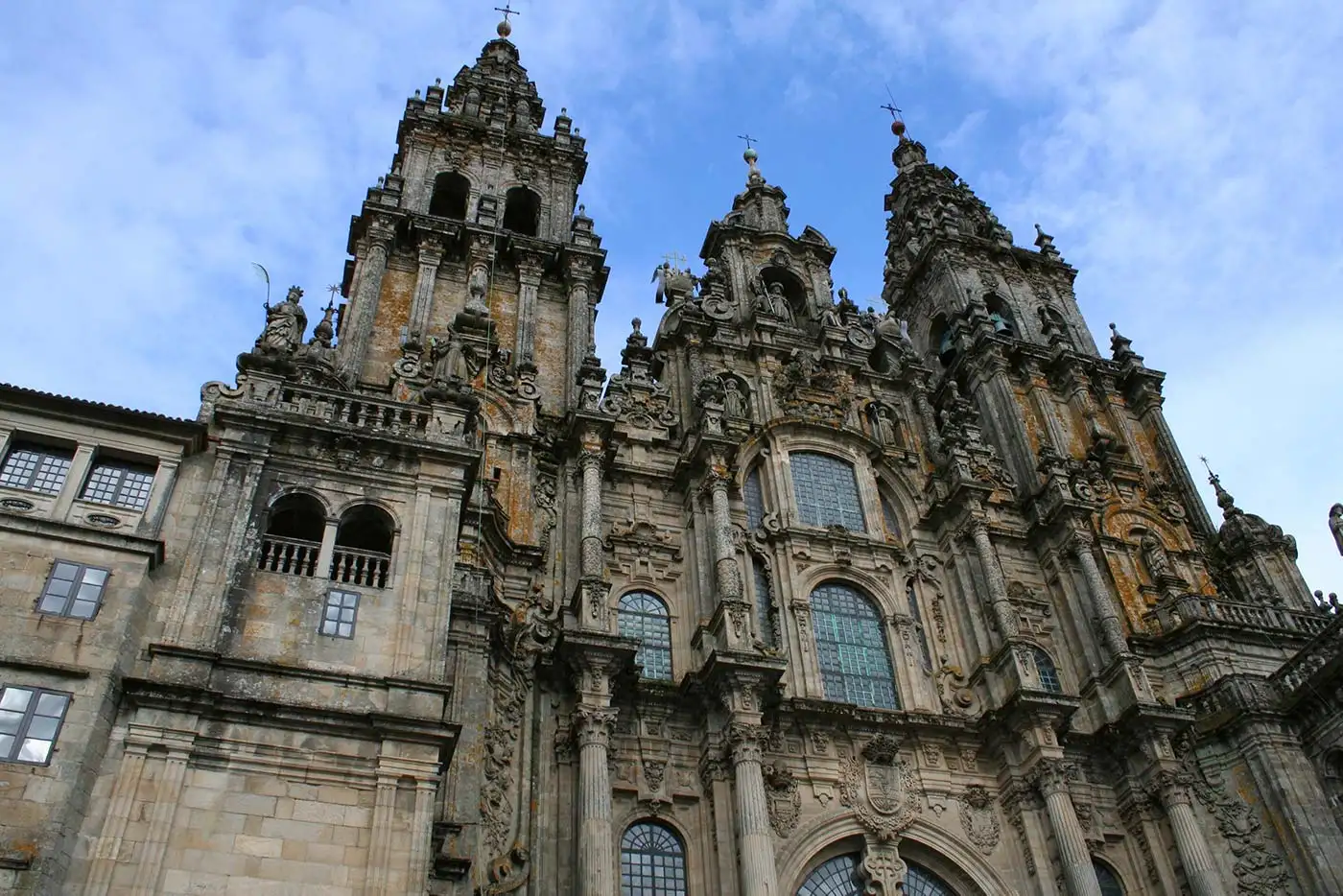
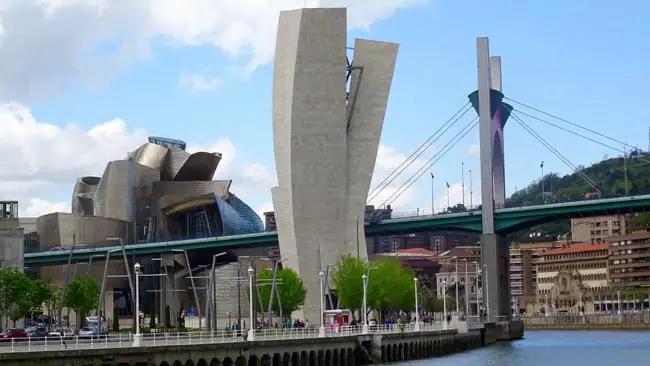
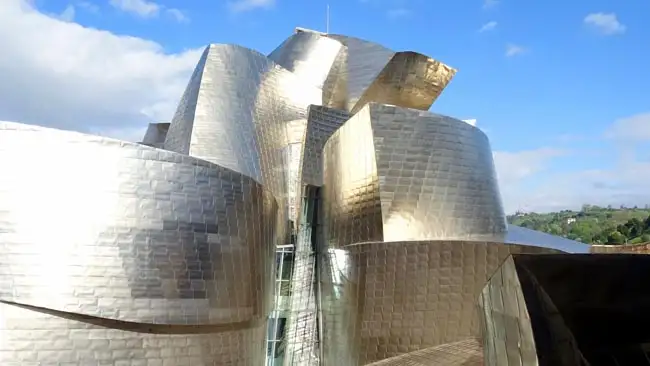
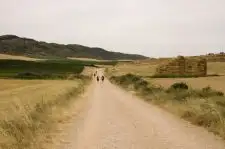
Excellent
Overall Rating
4.6
Extend Your Trip
This tour is part of a series that can be upgraded to make for a longer trip.
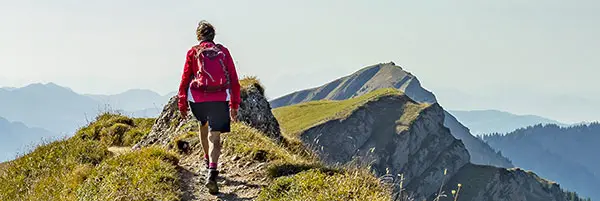
Fast and easy
Book this tour
Book your unforgettable adventure today! For any questions or advice, don't hesitate to contact us.
Have questions?
Contact Us
1-800-665-3998
- Final payment is due 90 days prior to departure.
- A non-refundable $500 USD deposit is payable at the time of booking
- Optional Single Supplement: $1080 USD (number of singles limited).
- Transferring to another tour or tour date is only permissible outside of 120 days prior to departure and is subject to a $100 USD change fee. (Read our cancellation policy for more info.)
Prices below are per person, twin-sharing costs in US Dollars (USD). Pricing does not include airfare to/from the tour and any applicable taxes. Get general information on flights to/from the tour.
Choose your departure date:
Frequently Asked Questions
- What is the maximum number of participants on a trip?Most of our tours carry a maximum of 18 participants; some tours (ie hiking tours) top out at 16. In the event that we do not achieve our minimum complement by our 90-day deadline, we may offer group members the option of paying a "small-group surcharge" as an alternative to cancellation. If all group members agree, we will confirm the trip at existing numbers; this surcharge is refundable in the event that we ultimately achieve our regular minimum. If the small group surcharge is not accepted, we will offer a refund of your deposit or a different trip of your choice.
- Can I extend my tour either at the beginning or end? What about stopovers?Yes, you can extend your tour either at the beginning or the end and we can book accommodation in our tour hotel. Stopovers are often permitted, depending on air routing. Stopovers usually carry a "stopover" fee levied by the airline.
- How do I make a reservation? How and when do I pay?The easiest way to make a reservation is via our website; during office hours, you are also more than welcome to contact us by telephone.
A non-refundable deposit is payable at the time of booking; if a reservation is made within 90 days, full payment is required. Some trips require a larger deposit. If international airline bookings require a non-refundable payment in order to secure space or the lowest available fare, we will require an increase in deposit equal to the cost of the ticket(s).
Early enrolment is always encouraged as group size is limited and some trips require greater preparation time.
Once we have received your deposit, we will confirm your space and send you a confirmation package containing your trip itinerary, any visa/travel permit related documents, invoice, clothing and equipment recommendations, general information on your destination(s), and forms for you to complete, sign and return to us. Your air e-tickets (if applicable), final hotel list, final trip itinerary, and instructions on how to join your tour, will be sent approximately 2-3 weeks prior to departure. - What about cancellations, refunds, and transfers?Please review our cancellation policy page for details.
- I am a single who prefers my own room. What is a single supplement?All of our tours have a single supplement for those who want to be guaranteed their own room at each location.
This supplement is a reflection of the fact that most hotels around the world do not discount the regular twin-share rate for a room by 50% for only one person occupying a room. Most hotels will give a break on the price, but usually in the range of 25-30% of the twin-share rate. This difference, multiplied by each night, amounts to the single supplement.
The conventional amount can also vary from country to country and some destinations are more expensive than others for single occupancy. In order to be "single friendly," the supplements we apply are not a profit centre for us and we do our best to keep them as reasonable as possible.
On most tours we limit the number of singles available, not to be punitive, but rather because many hotels allow for only a limited number of singles; some smaller hotels at remote locations also have a limited number of single rooms available.
Please note that most single rooms around the world are smaller than twin-share rooms and will likely have only one bed. - Do you have a shared accommodation program?Yes! If you are single traveller and are willing to share, we will do our best to pair you with a same-gender roommate. On most of our tours, if we fail to pair you, we will absorb the single supplement fee and you will default to a single room at no extra charge. At some destinations, however, where single rooms are not significantly discounted, or not at all, we may apply a "mandatory" single in the event that we cannot find you a share partner. This is usually 50% of the usual supplement, but can be as much as 100%. If applicable, this proviso will be noted on each tour page on this website, on your invoice, and in our tour date/price book (available for download under "Resources").
Please choose a departure date!
